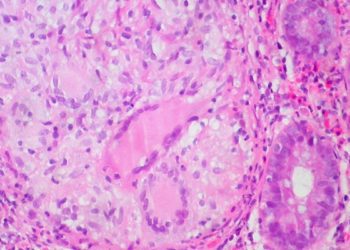Primary care physicians underuse Medicare prevention and coordination codes
1. If half of eligible Medicare patients received preventive and coordination services, primary care providers (PCP) could significantly increase annual revenues
2. The process of navigating eligibility, documentation, and time spent on billing may be a barrier for PCPs using these services and their billing codes.
Evidence Rating Level: 2 (Good)
Study Rundown: The Medicare Physician Fee Schedule (MPFS) determines the billing codes for the reimbursement for activities completed by physicians. Additional codes aim to recognize services that PCPs provide which are beneficial to patients. These services include counseling on smoking cessation or weight loss as well as coordination of services such as transitional or chronic care management. However, there has been low adoption of the billing codes associated with these preventative and coordination services. In the present study of Medicare billing codes, a significant portion of older adults eligible for preventive services were provided by them by PCPs. However, only a small fraction of PCPs billed for providing these services. Many coordination services such as follow-up post-hospitalization, chronic care management, and cognitive assessment with care planning services were also underbilled. Accordingly, PCPs are losing a significant amount of their potential salary by underutilizing preventive and coordination services codes. A major limitation of this study is that the rate of service provision was determined by a survey. The survey did not capture the amount of time invested in providing the service, an important consideration for identifying the opportunity cost of billing.
Click to read the study in AIM
Relevant Reading: Trends in outpatient care for Medicare beneficiaries and implications for primary care, 2000 to 2019
In-Depth [cross-sectional study]: The present cross-sectional study examined the use of 34 Medicare billing codes that represented prevention and coordination services provided by PCPs. Particularly, the comparison between provision of these services and billing for them. Foregone revenues were estimated by using national practice databases to simulate primary care practices nationwide. A lower bound of revenue loss was defined as services already provided by PCPs but were not billed. Conversely, the upper bound was defined as providing and billing the services to half of all eligible patients as identified by Medicare. The eligibility of patients for individual prevention and coordination services ranged from 8.8% to 100%. Provision of services ranged from 5.0% to 60.6% annually between PCPs, though the median use of billing codes was only 2.3%. PCPs provided preventive services that amounted to $40,187 in uncollected revenue. PCPs could receive $124,435 in revenue if preventive services were provided to half of the eligible patients, including wellness visits. Additionally, if PCPs provided and billed for coordination services for half of all eligible patients, they could receive an additional $86,082 in revenue per year. Depending on the specific code, the increase in revenue at the patient level would be $0.76 to $27.17 per visit. Overall, further studies must be conducted to delineate the barriers to billing code usage by PCPs.
Image: PD
©2022 2 Minute Medicine, Inc. All rights reserved. No works may be reproduced without expressed written consent from 2 Minute Medicine, Inc. Inquire about licensing here. No article should be construed as medical advice and is not intended as such by the authors or by 2 Minute Medicine, Inc.






![The ABCD2 score: Risk of stroke after Transient Ischemic Attack (TIA) [Classics Series]](https://www.2minutemedicine.com/wp-content/uploads/2013/05/web-cover-classics-with-logo-medicine-BW-small-jpg-75x75.jpg)
